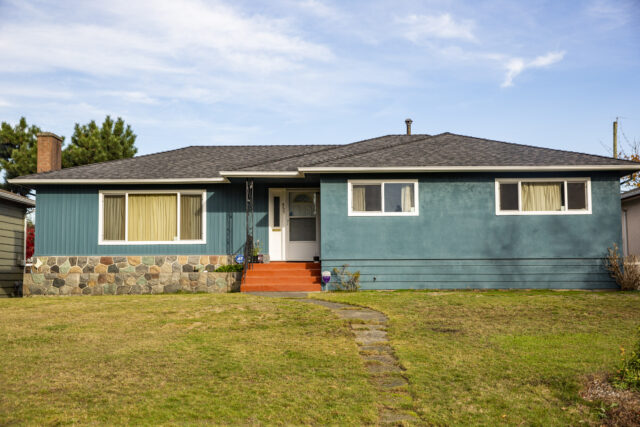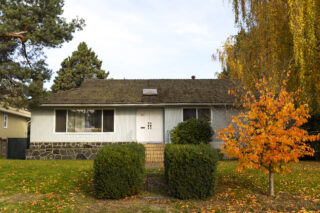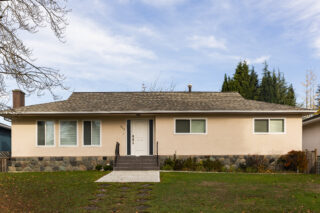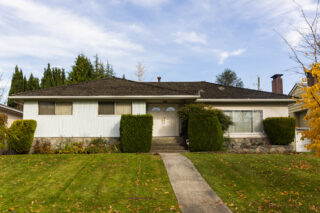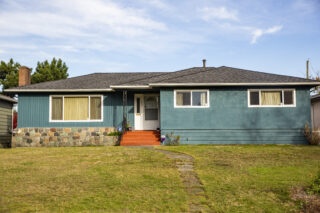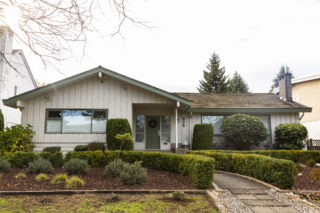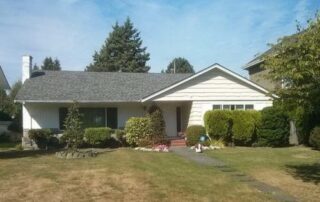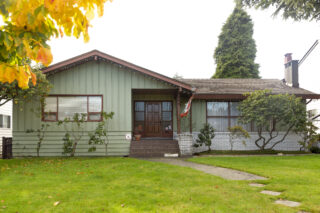Lap siding, V-groove panels, stucco and sometimes board and batten appear on ranchers as cladding. Roofs and asphalt or tar and gravel, upgrading to cedar shake or metal seamed roofs. Windows are generally powder-coated aluminum often covered with robust wood trim.
Form
The Rancher was a popular style of the 1950s and 1960s, usually presenting a low, wide facade to the street, with a low-pitched side-gabled roof. Often it will have large picture windows and a prominent chimney block providing a vertical accent, indicating its evolution from Modernist styles. In suburban areas with very wide lots, it might have a garage integrated with the main roofline and facing the street. In many cases the Rancher is set near ground level with subterranean basements. Many Vancouver examples are actually Split-Level style, as the lots are not wide enough to contain the required number of rooms into a single floor.
Background
The Rancher first appeared in the mid 1930s. They were developed by California architects but popularized in the post-war period. In the 1950s, the Rancher style became one of the most common house types. This was thanks to the car-focused development and wider lots of new suburban neighbourhoods. Loosely based on earlier Spanish colonial styles mixed with Craftsman styles and Prairie modernism, the Rancher maximized facade width in a way standard houses did not have the luxury to do before. Their long, low profile was a significant change from earlier house styles. The Rancher style is found in neighbourhoods across Vancouver.
Details
- Low-pitched roofs
- Asymmetrical one-storey shape
- Hipped, cross-gabled, or side-gabled roof
- Horizontal, rambling layout
- Moderate or wide eave overhang
- Minimal decoration
- Wood and brick wall cladding used, sometimes in combination
- Large picture windows in living areas
